Related resources
Is that a Pipit or a Lark?
Identifying Indian and Singing Bushlarks
Larks of Telangana (PDF)
By Ramit Singal
Hopefully, you’ve had some practice in telling apart larks from pipits. In this article, we’ll try and give some tips to tell between 3 different groups of larks and the species within these groups. We’ll start with the Bushlarks, Skylarks and crested Larks – all of which can be mistaken for each other.
All these larks are generally fairly large and rotund, resident breeders and thus, show distinctive song-flights*.
*A song flight refers to the type of flight that a lark takes to while delivering a song, particularly in the breeding season.
Key differences between these groups are highlighted below:
| Bushlarks | Skylarks | ‘Crested’ Larks | |
|---|---|---|---|
| Crest | Not Present | Short and messy (when open), Not visible (when folded) | Prominent and pointed (when open), Rounded and short (when folded) |
| Bill | Thick and strong | Small and short | Variable |
| Song | High-pitched and simple | Complex and varied | Complex and musical |
| Song-flight | Ascends and parachutes down with spread wings and tail | Flies high with rapid wingbeats | Flies with slow and relaxed wingbeats |
Bushlarks (Mirafra sp.)
There are four species of bushlarks that one may encounter within the Indian subcontinent. All of them are thick-billed, relatively short-tailed, heavily-built larks with exposed nostrils. They often show rufous in the flight feathers. With experience, one can tell the high-pitched bushlark songs and the relatively nicer sounding calls from those of other lark species as well.
All four bushlarks are resident in our region.
Indian Bushlark (Mirafra erythroptera)
The Indian Bushlark is pale and well-marked with a defined whitish supercilium that runs around to the cheeks, heavily spotted breast, and noticeable rufous on wing panels. Structurally, it appears leaner and has a longer tail.

Indian Bushlark – note the small thick beak, long tail, well-defined supercilium, overall pale plumage © Albin Jacob (See in checklist)
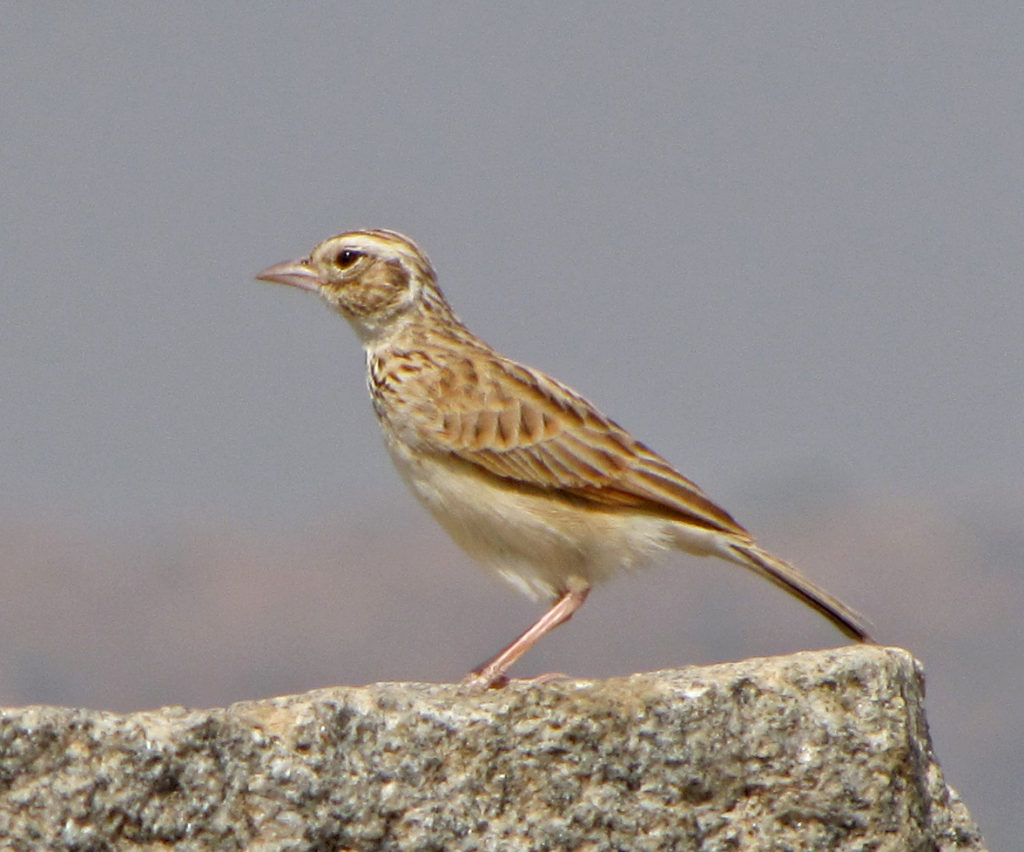
Indian Bushlark – Note the long whitish supercilium, rufous on wings, long tail, pale plumage © Ramit Singal
Habitat: Dry regions across the country.
See range map here.
Below is a video of an Indian Bushlark singing:
Singing Bushlark (Mirafra cantillans)
The Singing Bushlark appears pale and small, with minimal spotting on breast, long tail, short and thick beak. Wing panels are not as rufous as in Indian Bushlark and the pale throat and white outer tail feathers are notable features.

Singing Bushlark – note white on throat and outer tail feathers, long tail, clean breast, lack of rufous on wings © Mridul Anand (See in checklist)
Habitat: Dry, arid regions.
See range map here.
Jerdon’s Bushlark (Mirafra affinis)
The Jerdon’s Bushlark appears dark and very heavily streaked. The facial pattern is messier and ill-defined. Overall, it looks chunkier with a shorter tail, longer legs and very heavy beak. It is more similar in proportions to the Bengal Bushlark.

Jerdon’s Bushlark – note messy facial pattern, heavy streaking, short tail, chunkier build © Ramit Singal
Habitat: Scrubby, relatively well-vegetated areas.
See range map here.
Below is a video of a Jerdon’s Bushlark calling:
Bengal Bushlark (Mirafra assamica)
The Bengal Bushlark is darker than the other bushlarks, with relatively fewer marks/streaking on face and back; and a contrasting whitish throat. Structurally, it is large with a long and heavy beak, short tail and rich rufous on the wings.

Bengal Bushlark – note heavy beak, large build, dark plumage, lack of clear patterns or streaking © Ramit Singal

Bengal Bushlark – note overall darker plumage, large beak, lack of streaking on mantle © Sourav Maiti (see in checklist)
Habitat: Wetter grasslands, cultivations, open wetlands
See range map here.
Skylarks (Alauda sp)
Skylarks are represented in India by two species, out of which only one is considered to be common across the country. They have relatively small and slimmer beaks, reminiscent of pipits, and short and somewhat scruffy crests. They are usually heavily marked above and look fairly large bodied. In song flight, the complex and rich song is delivered from high up with rapid, trembling wingbeats being a characteristic feature. Both species have pale lores and a black stripe behind the eye.
Skylark in song-flight:
Oriental Skylark (Alauda gulgula)
Smaller than the Eurasian Skylark, they also become progressively darker as one moves towards the south of the country. The crest is small, the tail appears short in proportion to the body, and the rufous on the wings is darker.
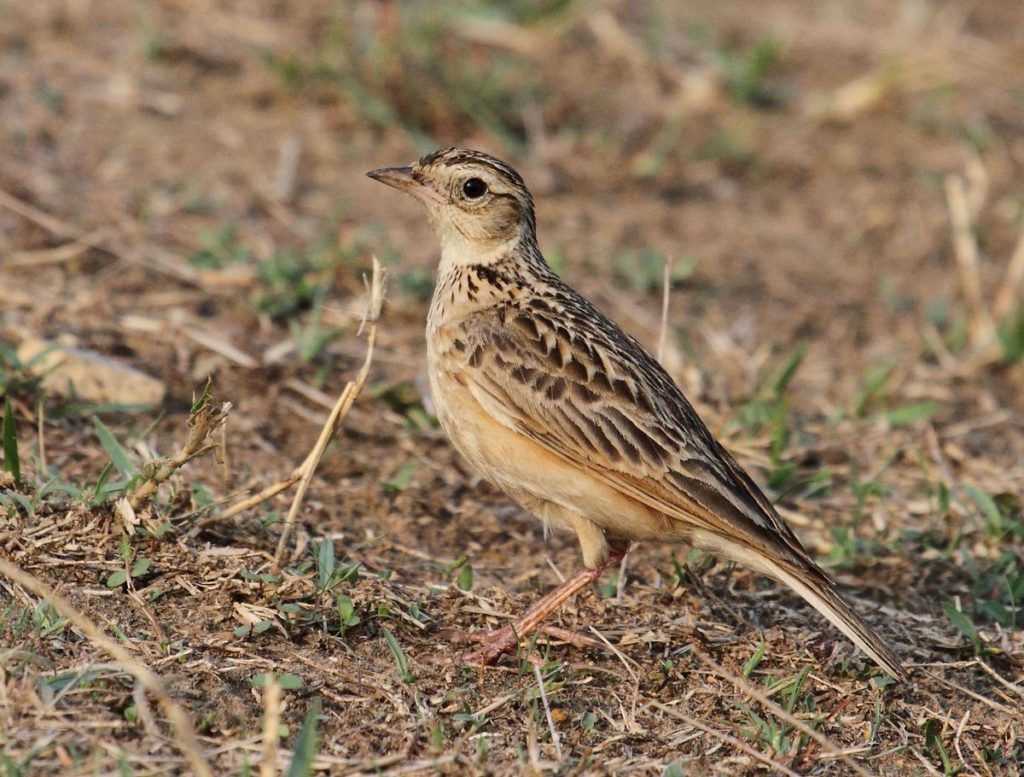
Oriental Skylark – folded crest not visible, long tail, pale lores, heavy streaking on back, slim beak © Albin Jacob (See in checklist)

Oriental Skylark – note short crest, short tail, large body, pale lores and slim bill © Ramit Singal
Habitat: Generally found in all habitats – from dry grasslands to wetlands.
See range map here.
Oriental Skylark singing:
Eurasian Skylark (Alauda arvensis)
Much larger than the Oriental Skylark, with a longer tail and relatively shorter beak. On closer look, one may even note the longer primary projection. In flight, notice the white trailing edge to the flight feathers and the white outer-tail feathers.
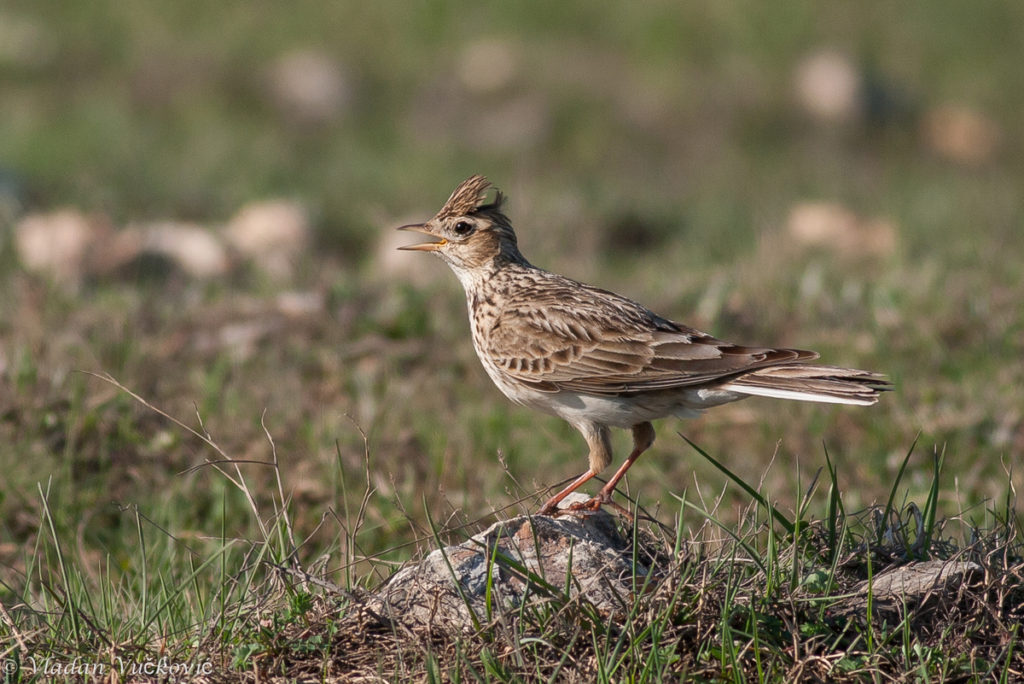
Eurasian Skylark – note white outer-tail feathers, long primary projection, short beak, long tail © Vladan Vuckovic (See in checklist)
Habitat: Found in cultivated and fallow lands, as well as around wetlands. Very rare in India and known regularly only from a few sites.
See range map here.
‘Crested’ Larks (Galerida sp)
These larks can be told apart from the others by the presence of a prominent crest, relatively longer and pointed beaks (except Sykes’s Lark) with a curve to the tip of the upper mandible and nostrils wholly or partially covered by feathers. Their song is the most musical out of the larks mentioned in this article and is quite rich. Flight is relatively relaxed with slower wingbeats.
Note: Very often, the species in this group may be told apart by noting their range as well.
Crested Lark (Galerida cristata)
A heavy looking lark with a long and slim beak and pointed crest. In comparison to Sykes’s and Malabar Lark, it is much paler overall. It is well streaked on the back and breast. Perches often on rocks and wires especially when delivering its song.
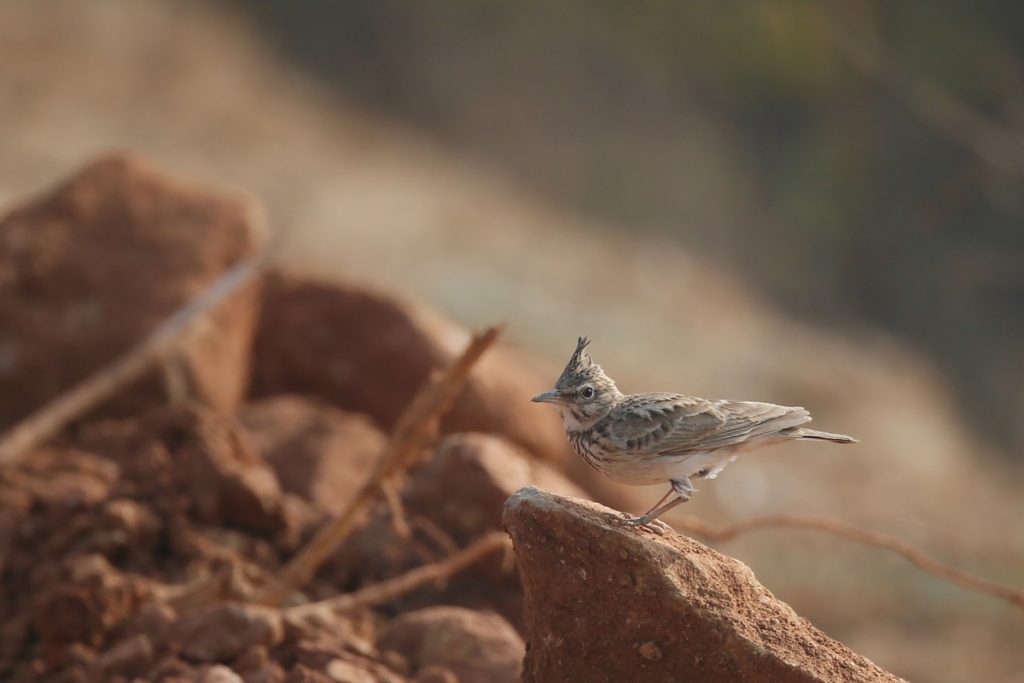
Crested Lark – note pointed crest, long and slim beak, pale plumage © Ting-Wei Hung (See in checklist)
Habitat: Dry and arid areas.
See range map here.
Crested Lark singing:
Malabar Lark (Galerida malabarica)
Smaller and browner than the Crested Lark, it has a shorter beak and is streaked much more heavily on the upperparts as well as on the paler underparts.

Malabar Lark – note brownish tones, pointy crest, shorter beak than Crested Lark © Vaidehi Gunjal (See in checklist)
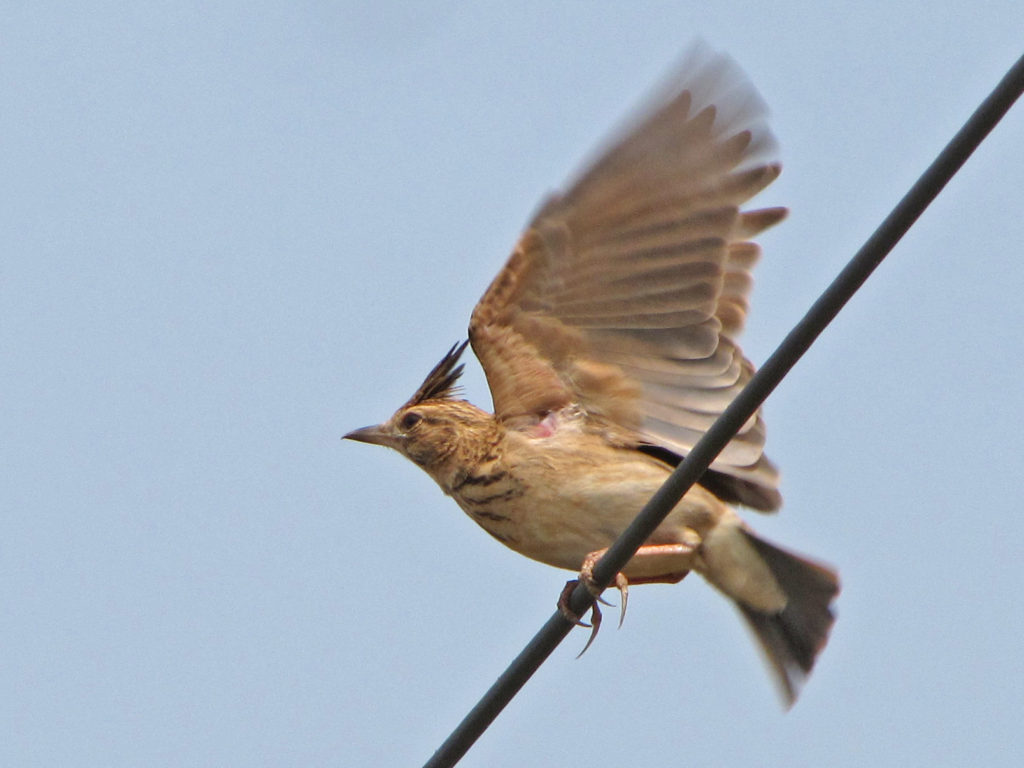
Malabar Lark taking off – note the pointy crest, short bill, darker tones than Crested Lark © Ramit Singal
Habitat: Grasslands and open areas in wetter regions.
See range map here.
A video of a Malabar Lark in song:
Sykes’s (Tawny) Lark (Galerida deva)
The smallest of the ‘crested’ larks, it can range from pale to warm buff and is relatively unmarked. Note the thick, short beak and the near-absence of any streaking on the breast, rump and nape. It is known to have one of the most complex songs, often mixed with melodious, rich notes and mimicry.
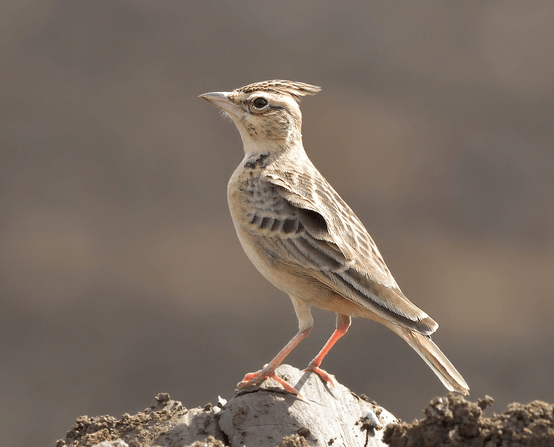
Note the thick beak, pointy crest, clean breast © Vaidehi Gunjal (see in checklist)

Sykes’s Lark – relatively clean breast, folded crest appearing to be small, thick and short beak © Mulagala Srinivas (see in checklist)
Habitat: Dry, stony and arid landscapes.
See range map here.
Notes
a. All range maps courtesy of eBird India.
b. The features mentioned here are not exhaustive, but aimed at being useful for beginners to tell apart one species from another with some certainty. eBird also provides the following slashes and spuhs in case of any confusion:
- Jerdon’s/Indian Bushlark
- Bushlark sp
- Eurasian/Oriental Skylark
- Alaudidae sp (Lark sp)
Header Image: Oriental Skylark Alauda gulgula by Abhishek Das/ Macaulay Library

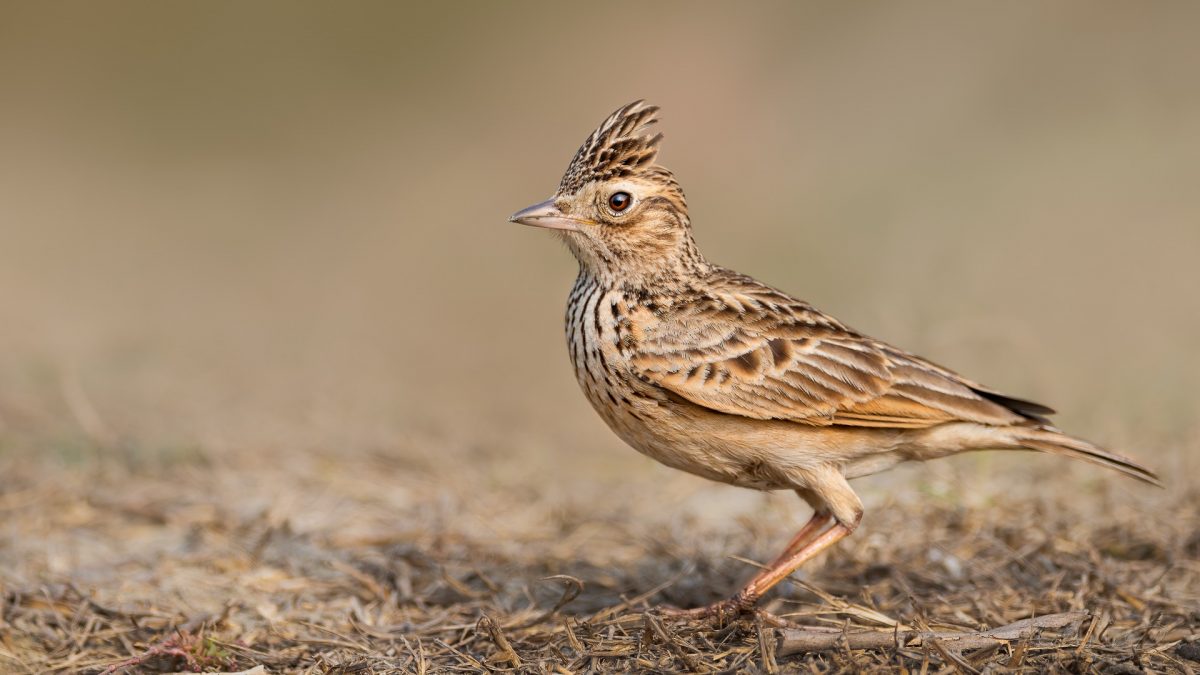
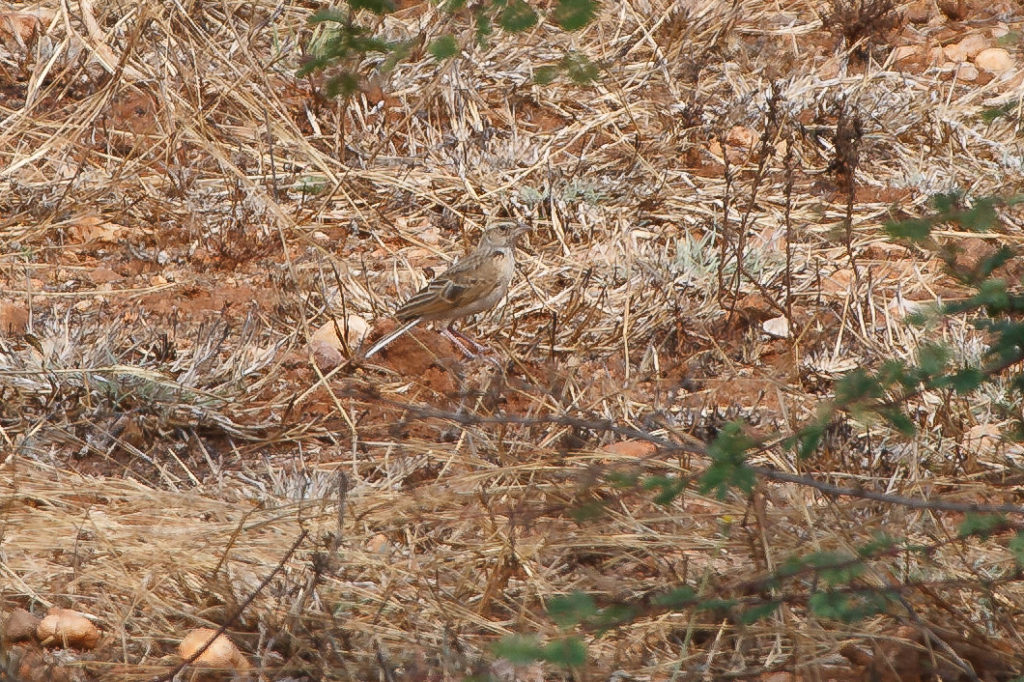
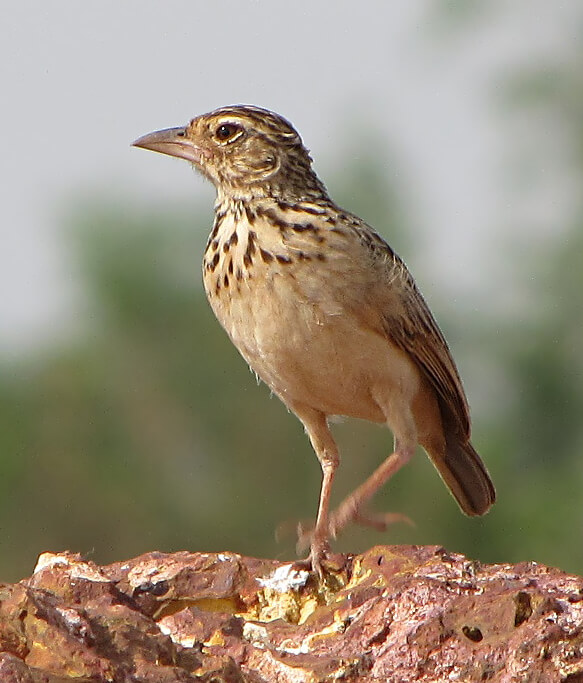
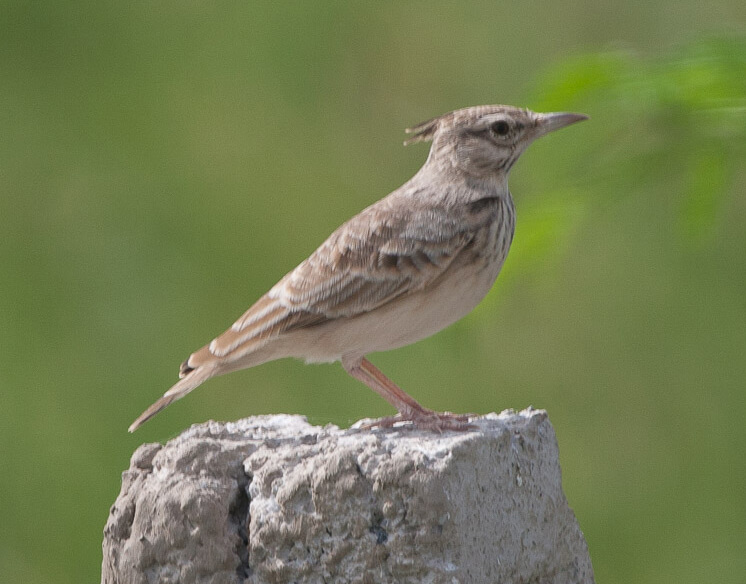
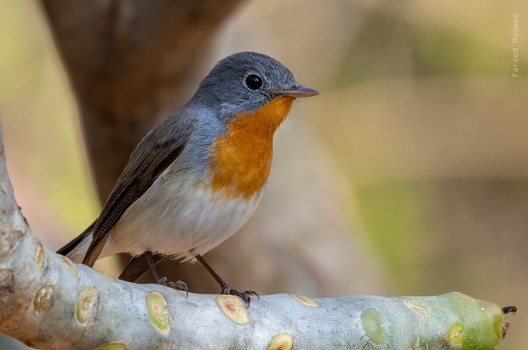
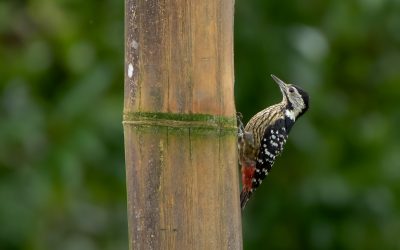
Excellent, clear article. Thanks a lot